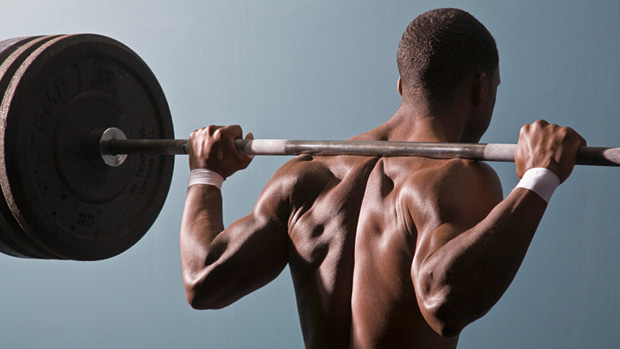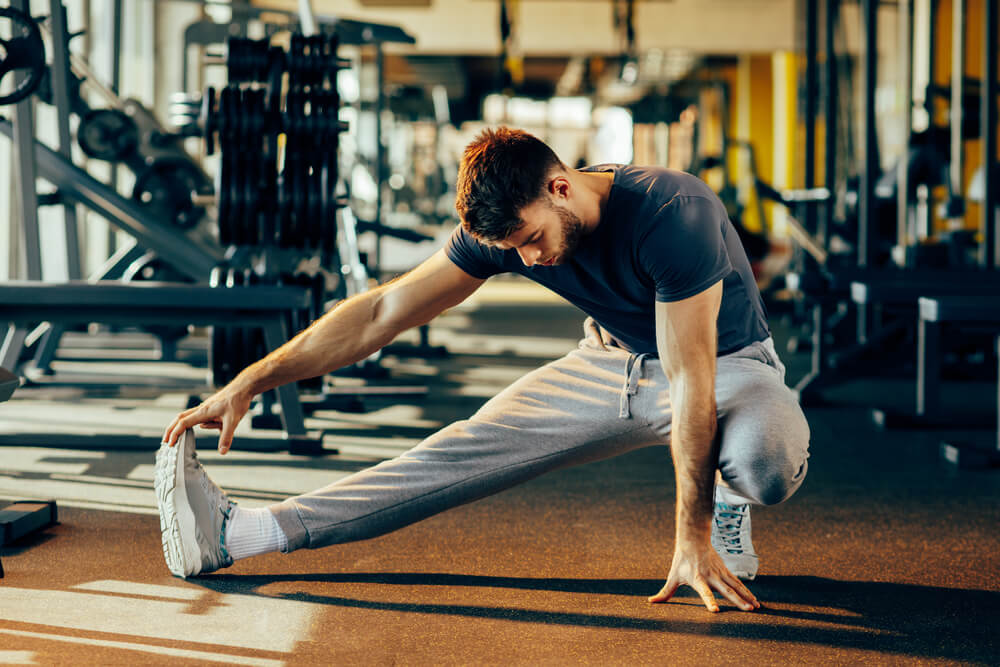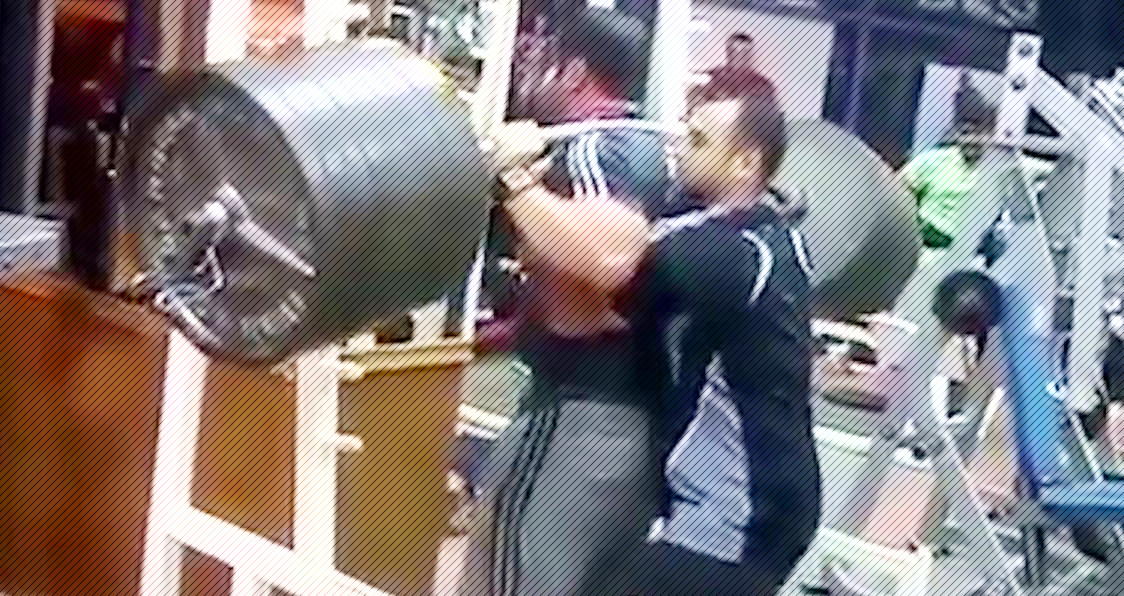Gym warm ups are massively overlooked but can help make you massive gains and move huge weights when done properly.
The problem you see with the bulk of gym bros is that their warm ups are half-hearted at best.
There is very little importance placed in warming up and you will often see one of two mistakes:
1) too much intensity in warm ups — less weight shifted in working sets
2) too little intensity in warm ups — improper muscular activation and higher injury risk
This article will seek to help you get the most of your warm ups so that you fire on all cylinders.
The Purpose of Your Gym Warm Up

The purpose of warming up in the gym is to prime your central nervous system (CNS), activate target muscles, induce blood flow to the target muscle group, reduce tightness, and prevent injury.
More often than not, you’ll see guys going ham, doing massive sets of 20+ reps on each of their warm up sets as they pyramid up to their working sets.
The other mistake is that some lifters will do some pathetic static stretches before doing a couple of reps at half of their working weight before jumping right in.
Both of these methods are incorrect and will lead to subpar results at a higher risk of injury.
How to Warm Up Properly

There is no one-size-fits-all warm up for lifting.
There are various lifting discipline that require slightly nuanced warm ups and more injury-prone areas may require further activation and antagonist stimulation (doing light lat pull downs before pressing, for example), before jumping in.
It is unwise to simply jump straight into the deep end.
And warming up is subjective, varying from lifter to lifter.
Say you are a bodybuilder looking to Incline Dumbbell Press 100lb for 3 sets of 8-12.
You might start by warming up your rotator cuffs with some face pulls, then do some light incline flyes with 20lb dumbbells.
Then, you might pick up the 50lb dumbbells and crank out a set of 15 followed by a set of 8 with 80lb.
Finally — and this will take some common sense from the lifter in question — you might decide to hit your first working set based on how you feel and how ready you are to take on the target weight.
Some lifters may choose to do some mild cardio for 5-10 minutes to help get the blood pumping before hand.
But this is on a case-by-case basis.
If you need a program to get you STRONG AF, check out our STRONK Bundle here. This eBook will take your strength training to the next level.
How to Warm Up for Strength

Strictly speaking, most strength athletes reserve their dumbbell work for accessory movements or volume work.
Their first sets will typically involve some form of barbell training.
Let’s say that you’re training the Bench Press at RPE 8 for 4 sets of 4 — a goal weight of 315lb.
You may start by introducing some dynamic stretches, mild muscular activation, and prime your CNS by performing your second and third warm up sets explosively.
99% of you would start with 135 or an empty bar for 5-15 reps. Then, say, 225lb for 5; 275 for 3; and 295 for a single.
Here, you are fully warmed up WITHOUT fatiguing yourself before jumping into your working sets.
When I was a powerlifter, I would do my heavy Deadlift Volume Work as my THIRD exercise of the day.
I would start off with heavyish barbell rows (RPE 7-8) for 6-8 reps, then 2 sets of heavy shrugs (RPE 7-8), and by the time I got to my working Deadlift sets, I was primed to be explosive, warmed up, and ready to rock and roll.
Applying this method, I hit multiple Deadlift Rep PRs — as the movements I chose would adequately warm me up and the explosive nature of shrugs would enable me to tear the bar off the floor with minimal relative effort.
Let’s assume you’re warming up to a Deadlift One Rep Max of 500lb.
Here’s how I would do it:
Activation work: Banded Crab Walks and Banded Good Mornings
Then: 135 for 3-5, 225 for 3, 315 for 2, 365 for 1, 405 for 1, 445 for 1, 475 for 1, 500lb PR.
By the time you’ve pyramided up to 500lb, you will have completed at least a dozen reps across several minutes.
Please make sure that you are adequately resting between sets — even during your warm up to avoid fatigue setting in.
If you need a program to get you STRONG AF, check out our STRONK Bundle here. This eBook will take your strength training to the next level.
TIP: Warming Up your CNS For a Rep PR

For this, we are assuming that you will be attempting a Bench Press or Squat PR.
Warm up as if you would towards your target weight.
Instead of attacking your target weight, choose a supramaximal load.
Say you want to Squat 90% of your one rep max for five. Simply load 110-120% of your squat one rep max, walk out and hold it for 5-10 seconds — DON’T ATTEMPT TO SQUAT.
Then, load the bar with 90% of your one rep max — your intended PR weight — and attempt your PR when you are ready.
Your body will be “tricked” into thinking that it will be attempting a far heavier weight and your CNS will be primed accordingly.
This will make it SIGNIFICANTLY easier to plow through your PR.
The same principle can also apply to the Bench Press.
Finally, let’s assume that you warming up to a heavy Deadlift but you don’t want to fry your CNS beforehand.
You may pick a SQUAT pattern movement — NOT LUNGE as it will fatigue your muscles too much — before attempting your Deadlift Warmup.
This will activate/warm up many of the muscles you will be using in the Deadlift without taxing your CNS too much.
I used to love doing a heavyish set of Front Squats (RPE 6-8) before attempting a Deadlift PR for this very reason.
If you need a program to get you STRONG AF, check out our STRONK Bundle here. This eBook will take your strength training to the next level.
Don’t hesitate to email us at [email protected] for personalized coaching and a client questionnaire if you’d like DEDICATED tailor-made personal training on strength training, building muscle, losing fat, developing athleticism, and more — all to your liking, lifestyle, habits, and taste!
Otherwise, don’t forget to claim your FREE eBook detailing how to lose 20lb of fat while building muscle in 12 weeks! You can claim it here.
Alternatively, you can pick up a FREE eBook on fundamental strength principles offering an introductory workout program.











